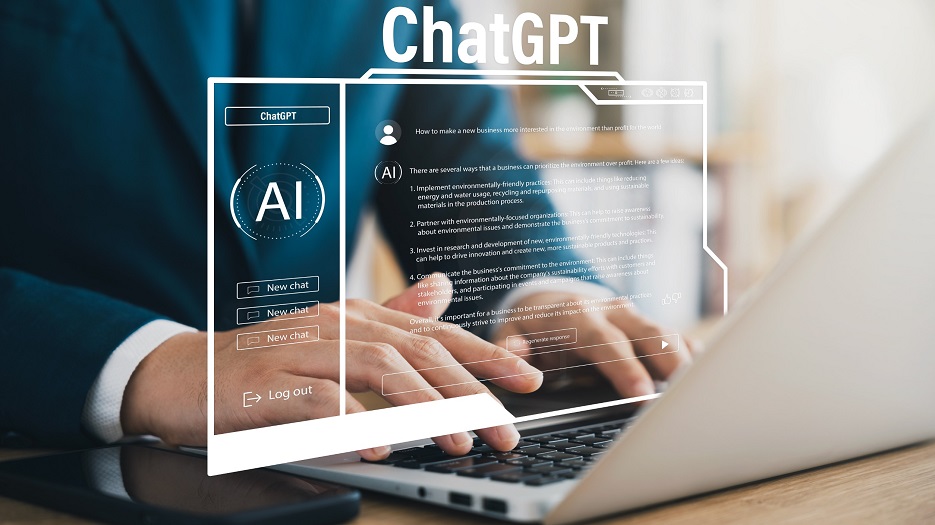6 Things to Know About ChatGPT

App developers and tech companies alike are taking advantage of the convenience and ease-of-use provided by Artificial Intelligence (AI). In its first two months of use, millions have been flocking to ChatGPT — the latest natural language processing (NLP) technology that is changing the way professionals approach writing.
Utilising cutting-edge artificial intelligence technology, this program mimics human conversations in its procedurally generated writing, and is already being planned for use in a variety of applications, such as virtual assistants, chatbots, and automated customer support.
Let’s explore the benefits of ChatGPT, how it works, and how it is being used in the real world.
What is ChatGPT?
Developed by OpenAI, ChatGPT is a deep learning-based natural language processing system that uses a neural network model to generate conversations. The program is based on the latest research on machine learning, and is designed to generate conversations that are similar to the way humans interact with each other.
ChatGPT is able to understand the context of conversations, and generate responses that are appropriate to the context. This intuitive model’s initial research began back in 2015, whereas the model was released as a prototype to the public in November of 2022.
Since its release date, ChatGPT has seen about 57 million active users each month and is already seeing usage in areas such as marketing, education, and even healthcare. Its popularity continues to rise, with an expected 100 million users as of January 2023.
So how does it work? ChatGPT builds off of GPT-3 — a large-scale language generation system developed by OpenAI — and is trained on billions of words from both public and private sources. By using the GPT-3 model, ChatGPT is able to generate conversations by understanding context and conversational flow.
After a user inputs a line of text as a reference, ChatGPT first breaks down the text into individual words and phrases. It then utilises a deep learning-based natural language processing system called “transformers”.
This system is designed to learn and remember conversational patterns, and is able to generate responses that are more natural and human-like than traditional chatbot models. The response is then checked for accuracy and relevancy before being sent back to the user.
6 interesting facts about ChatGPT and OpenAI
With that established, let's take a look at some interesting facts about ChatGPT and how this system is impacting the way people engage with technology.
1. OpenAI was originally founded by Sam Altman and Elon Musk
The company was created with the mission of advancing artificial general intelligence (AGI) through safe and open means, first founded by then Y Combinator president Sam Altman and Tesla CEO Elon Musk.
Alongside Greg Brockman, Ilya Sutskever, John Schulman, and Wojciech Zaremba, Altman and Musk created an AI lab focused on creating breakthrough advances in the science of deep learning and natural language processing.
Though he would eventually leave the company, Musk's concern for the effect artificial intelligence would have on humanity continues to be integral to OpenAI's mission.
2. The system was trained on over a billion lines of text
The GPT-3 model was trained via more than hundreds of billions words, collected from both public and private sources such as Wikipedia, Reddit posts, books, forum discussions, news articles, and blog posts. Microsoft's Turing NLG, the next
largest natural language processing system, uses over ten times fewer sources than ChatGPT, by comparison.
It also used OpenAI's own dataset, which contains over 31 million web pages (9 billion words) that were hand-labeled for accuracy by linguists before being used for training purposes. By using GPT-3 as its base architecture, ChatGPT has a much better grasp of human communication than traditional chatbot models.
3. ChatGPT is the sister model to InstructGPT
OpenAI doesn't just stop at natural language processing; it also has an AI system for learning how to complete tasks. Called InstructGPT, it is OpenAI's sister model to ChatGPT, and it learns instructions given to it by humans in order to complete tasks.
Where ChatGPT focuses primarily on human-like writing, InstructGPT was created with the goal of creating a more direct AI assistant that can adjust the style of its text as needed. It can follow basic commands, like teaching a child.
4. ChatGPT's program is being used by big-name companies
Altman's breakthrough technology is already making its rounds in the business world, with companies such as Meta, Canva, and Shopify incorporating the program into their own services. Many smaller businesses are also seeing tremendous success, utilising ChatGPT for their customer service teams.
Even Microsoft have an exclusive licensing deal with OpenAI to provide their customers with ChatGPT-powered assistance — with Microsoft specifically looking to bolster Bing's capabilities as a search engine via ChatGPT's intuitive system.
5. It even functions on social media
Chatbots have become increasingly popular on social media platforms, allowing companies to give customers a personal touch when responding to their queries or comments. What's more, a social media platform is integrating ChatGPT directly into their interface in an effort to beat out long-standing competitors.
Koo, for example, is an Indian social media platform aiming to overtake Twitter, claiming to be the “first microblogging platform in the world.”
6. OpenAI continues to improve the GPT system
While GPT-3 was a landmark achievement for natural language processing systems, it's clear that OpenAI isn't slowing down anytime soon. The latest version of the program, GPT-4, strives to increase the accuracy and fluidity of generated conversations.
This new edition will feature a more accurate language model and an improved learning system that can store more data and generate more complex conversations. One noteworthy improvement to the model is the ability to describe images the user uploads, as well as anticipate changes to the image.
Conclusion
ChatGPT is rapidly changing the way people interact with technology, providing users with a more personal and life-like experience. As OpenAI continues to improve the program — and more industries adopt it — it won't be long before ChatGPT becomes the go-to system for automated customer support or virtual assistant services.
The extent of its application is seemingly limitless, and its ability to generate conversations impeccably close to human dialogue may soon become a norm for many businesses around the world.





